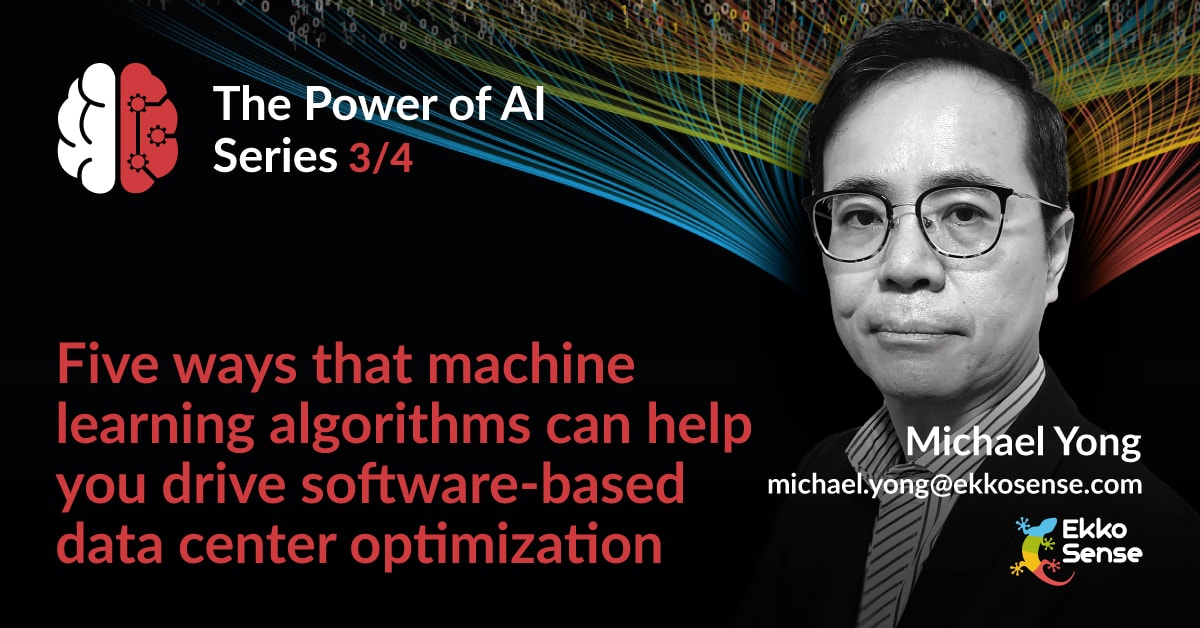Machine learning data center optimization – five pieces of advice

Data centers and the workloads they power are simply too critical to be left to automated systems. While machine learning data center optimization and AI have enormous potential, we don’t believe you should just trust AI to get on with managing the sensitive security and controls needed for critical data center cooling duty performance.
At EkkoSense we believe in a much more productive approach. Gather cooling, power and space data at a granular level, visualize that complex data to make it easier to compare changes and highlight anomalies, and then use machine learning algorithms to identify specific areas where actions could be needed. To provide an indication of these kind of capabilities, here are some example of how machine learning is already delivering practical and realizable benefits for EkkoSense customers;
- Defining cooling Zones of Influence – By capturing entirely new levels of data center cooling data (going beyond basic temperature measurements to also include energy usage and airflow distribution) EkkoSense can map zone-by-zone cooling analytics within the data center to help with resiliency and capacity planning decisions. This creates live airflow ‘zones of influence’ that can group racks into clusters that specifically match the cooling unit that’s provisioning them. With this kind of real-time thermal monitoring in place, data center teams can track cooling outputs and identify any poorly performing cooling systems in advance so timely improvements can be made
- Visualizing critical equipment performance within data centers – viewing data center rooms via real-time 3D visualizations provides a great visual representation of temperatures thanks to monitoring points on all the critical equipment. However, while it provides an immediate way of alerting and managing SLAs, the underlying cooling relationship remains hidden. Thanks to the Zones of Influence machine learning cooling algorithm, a different view can show the same section of the room broken into cooling zones
- Supporting enhanced capacity planning – Having cooling zones in place also highlights the local cooling capacity within those zones – meaning that any new rack or equipment placement can be sense-checked prior to deployment. Providing the model is kept up to date with existing allocated loads and future reserved loads, then the cooling zones can be used to ensure that capacity is not breached at some later date due to iterative but unconnected changes taking place over time
- Improving the data model – Applying machine learning algorithms and taking advantage of Zones of Influence within the data center optimization process not only allows teams to build the connections between their racks and cooling units, but also start to see how these relationships can impact airflow within spaces. Applying clustering algorithms also helps to uncover previously hidden cooling configurations and relationships within the data – however these can only be as good as the feature sets, they are provided with. Adding rack power data, for example, can considerably enhance the model – making it possible to represent the full data center cooling cycle with twinned supply and return cooling zones
- Making the most of anomaly detection – Machine learning also proves particularly valuable in terms of uncovering potential anomalies that are hidden within more complex data sets. For example, it’s much easier to pick up an outlier when data is presented in a 2D plot and 3D representation that it is when it’s completely masked in data offered as raw time-series charts
In my next post I’ll explore how you can overcome any concerns that you may have around adopting automation within your data center. The key is to adopt an approach that provides full human auditability over any machine learning algorithm recommendations. Missed article one and two? Find them here…
- Traditional data center software toolsets simply can’t balance escalating IT workloads with the need to cut energy consumption
- How machine learning and AI can make all the difference when it comes to data center optimization
In the meantime, learn more about how machine learning can unlock quantifiable data center optimization benefits by downloading our latest white paper: ‘Delivering proven machine learning and AI benefits for the M&E space’
What are your thoughts? Get in touch with me to discuss more [email protected]